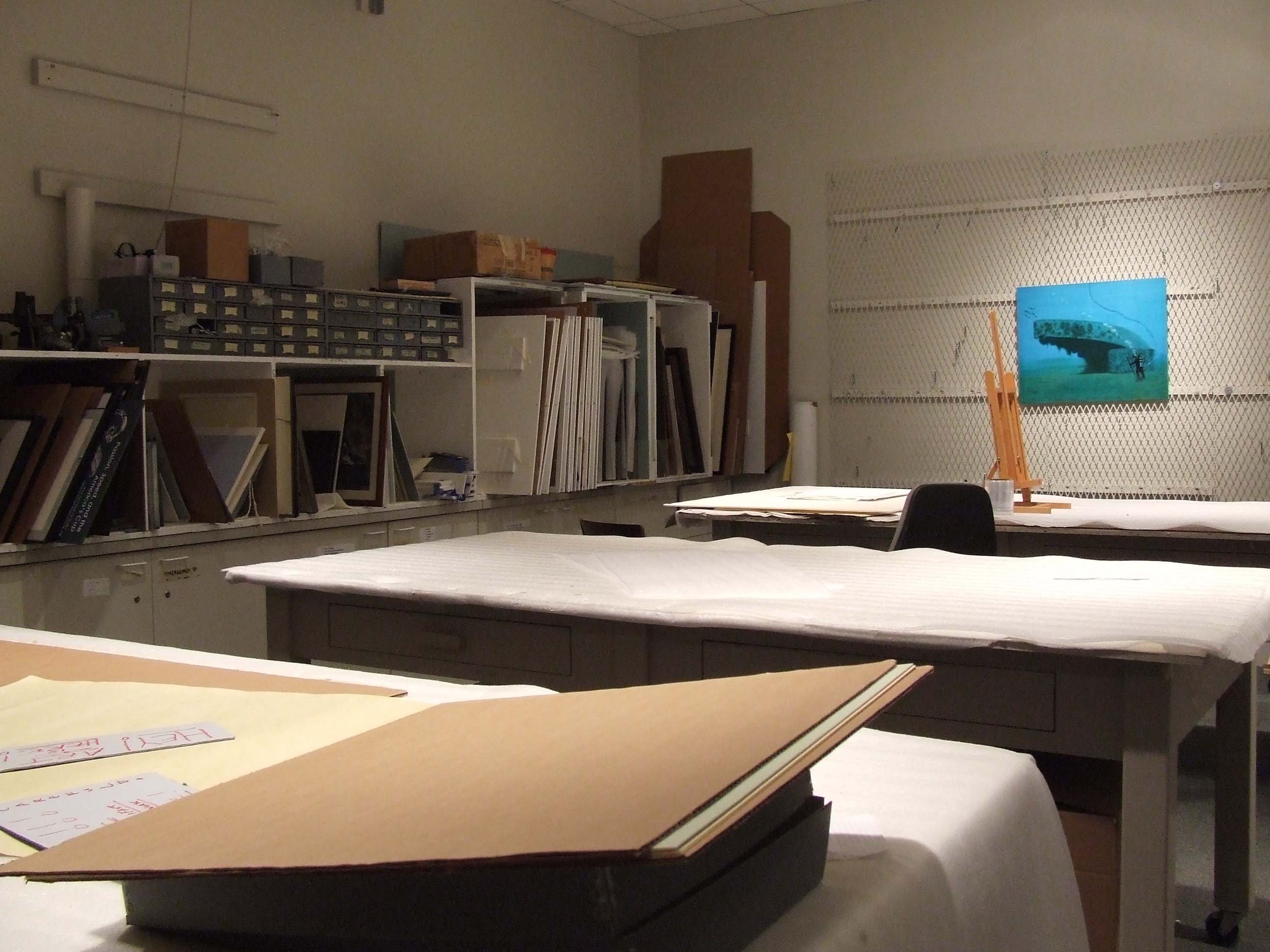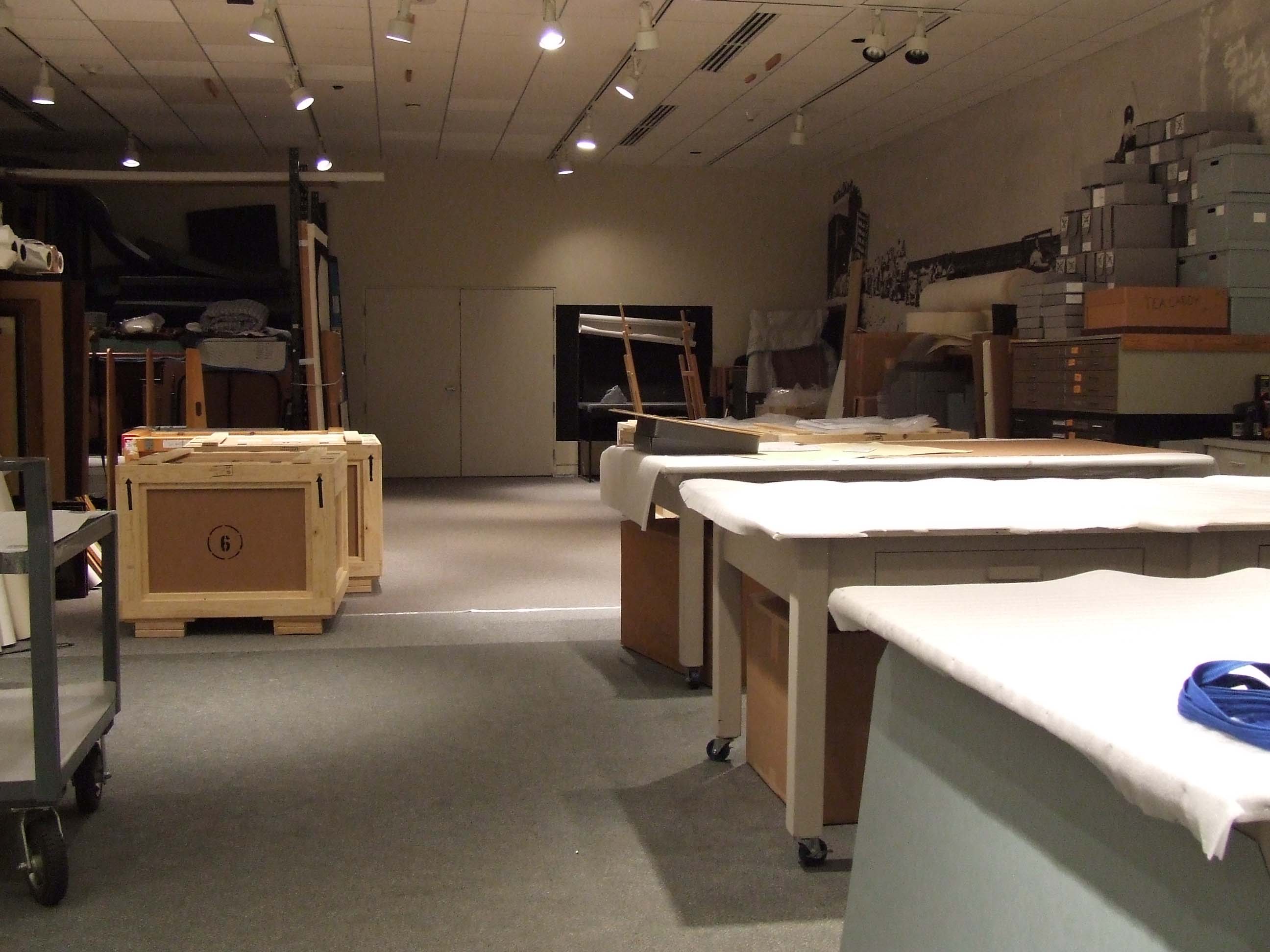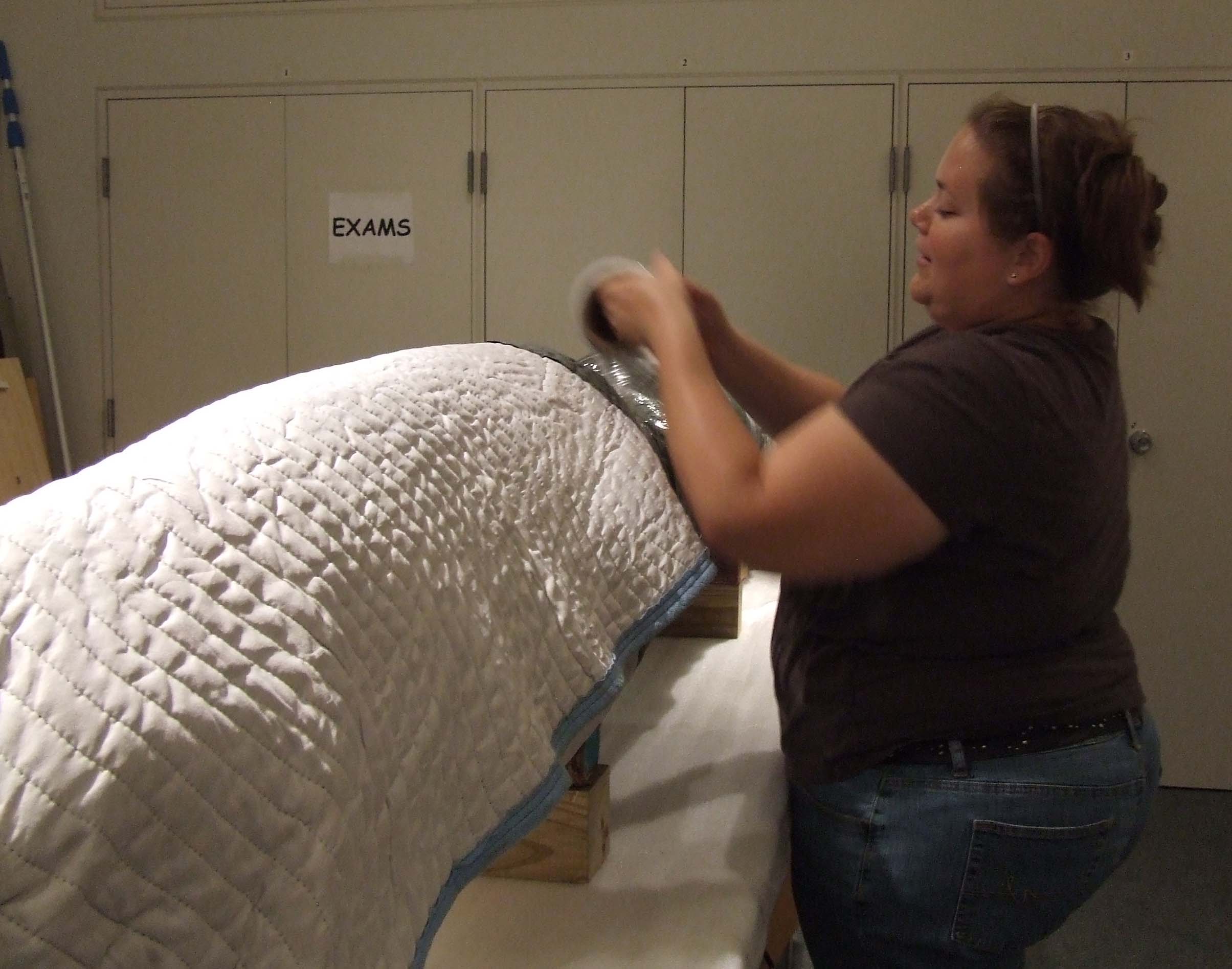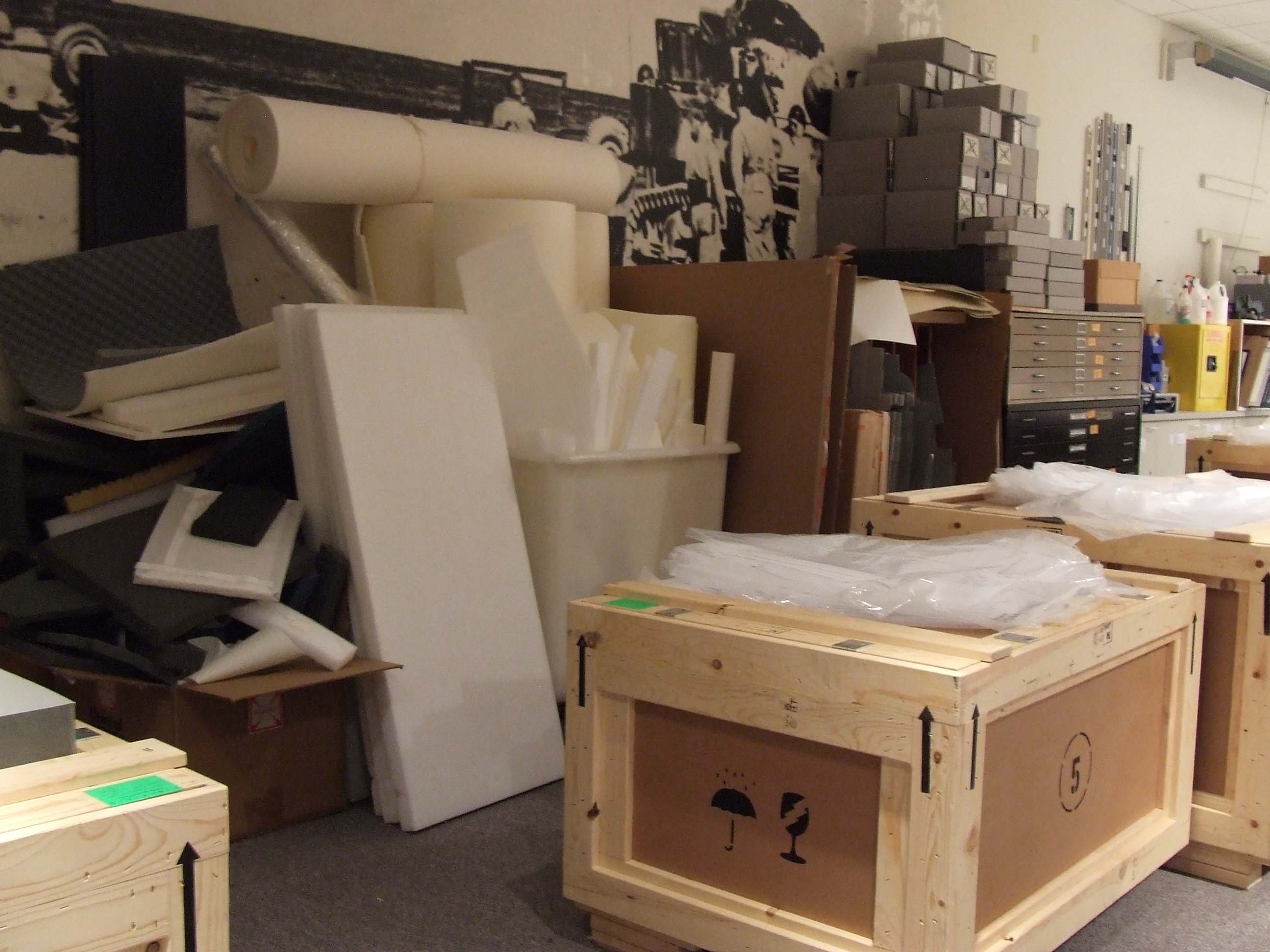Today I offer a true “behind the scenes” look at our museum world. Welcome to our workroom. A small, but vital area that sometimes looks as if a tornado blew through it and other times it looks so pristine that you would swear we probably don’t do any actual work here. The ambiance of this area depends on who is using it at the time, whether we are expecting a visit from a donor or researcher, and which projects are underway.
This is the place objects moving in, out and around the museum make a stop during their journeys. Shelving and closets house new artifacts, incoming and outgoing loans, and artifacts being moved on and off display. Items we are trying to identify or research will also find a temporary home here. The length of time an object will stay in the workroom ranges from a few minutes, a few weeks, months, or as long as a year (or more), depending on what needs to be done. It could take just a few minutes to replace an identification tag that was removed before exhibition and a year to complete the extensive paperwork and processing for a donation consisting of hundreds of items.
One of our curators may request that we pull a group of objects out of storage and bring them to the workroom so they can be considered for an exhibit. Seeing all the objects together in one place is an important part of evaluating their visual impact and to ensure that displays won’t look too empty or too crowded. This also makes it easier for our exhibit design team to measure artifacts so they can fit custom designed hangers and mounts to the pieces.
The workroom is used for framing prints and paintings too. The tables are all on wheels so they can be pushed together to accommodate large artwork. Framing supplies stored here include security hardware to lock frames to the gallery walls, foil tape that is used to prevent any insects or moisture from getting through the back of a frame and metal framing points to hold everything together. And after the framing is completed, metal grids on the walls provide a perfect place to safely hang the pieces until they move elsewhere. We also remove the frames from art that needs to be sent down to our Photography department in order to fulfill requests for publication quality digital images and reproductions.
The back of our workroom contains a small area for photographing artifacts that incorporates a table, colored background paper and a magnetic wall. The magnetic paint on the wall allows us to use tiny but very strong magnets to hold paper items in place. This makes photography easier and minimizes any damage to the objects.
As you can see in the photos, we have a collection of wooden crates down each side of the workroom right now. The majority of them are waiting for the end of our latest exhibit, Fragile Waters. When the show closes in September, each photograph will be carefully wrapped and placed in the crates according to a master list and then the crates will be shipped to the next venue. At any time, there may be a crate or two stored in the workroom, but we don’t normally have this many at one time. The number and sizes of these crates meant we had to sacrifice some floor space for a few months.
Stuffed into boxes all around the room and on large racks are the supplies we use to pack, ship and store our artifacts. Large blocks of foam, tissue papers, plastics and even that old standby—bubble wrap. There are boxes underneath the tables to hold even the smallest pieces of these materials. What can’t be used to pack a uniform in a large archival box for storage might come in handy when boxing a coin or a dish.
The boxes of foam aren’t a pretty sight, but we have to get creative when we are packing an item for travel. A boat cannot be boxed to protect it from harm, but it can be covered with blankets and stretch wrap. A box of duck decoys can be individually wrapped in foam. A figurehead can be enclosed in a Tyvek cover sewn by the staff member who can work a sewing machine.
A few bins for artwork, a couple wide cabinets for flat objects, a fire proof safe for a small amount of solvents and cleaners, a variable speed vacuum cleaner for artifacts and a radio round out our workroom.
Hope you have enjoyed this peek into our workroom. Stay tuned for more behind the scenes peeks.




